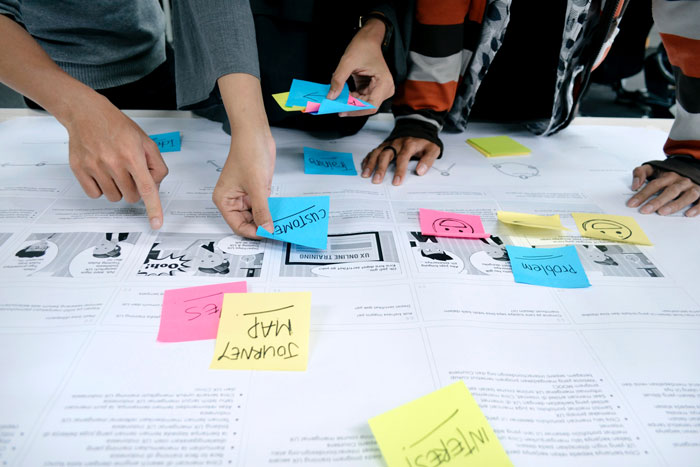An important question you should be asking yourselves. For many business owners, this is a fundamental question. To answer this question, you have to put yourself into the perspective of the customer. The answer to this question can bring up many different answers and can generate some difficult conversations within your organisation, but these answers can quite often allow you to pick up some valuable insights into your products or services on offer. Producing or mapping out a user’s journey will allow you to produce a product or service that is relatable to your target audience, it will also allow you to identify any potential customer problems.
Before you start mapping out a user’s journey you need to identify the kind of person or persona that’s going to be using your products or services. Taking a look at your competition, conducting surveys and interviews are several ways you can build up a character profile of a typical user. Let’s think about the context of design, specifically, web design. Mapping out a user’s journey will provide you with incredibly useful insights into your customer’s thought process, common goals of your customers, their motivations and feelings at each individual step of their journey.
Carrying on with the web design process, to put it simply, a user journey is a systematic process a website user will take to get to their end goal. Let’s consider somebody lands on the home page of a website, they then navigate to the ‘Our Services’ page and then from there, want to find out more on the company. Once satisfied with the content displayed, they then want to send an enquiry. Each of these stages or touchpoints should be logged and visually mapped out so you can see the flow of how somebody is interacting with a website.
There are no strict rules as to how you produce a user journey map but typically, a user journey map will be illustrated as a flow diagram, visualising a users relationship with a product or service over time, across various channels.
Once a user journey map has been visualised, a designer can now start considering how a user could reach their end goal quicker or more efficiently. For example, making it obvious from any part of a website that a user can easily get in touch from a clear ‘call to action'. Improving or optimising each touchpoint of a user’s journey is an important part of the process of providing your customers with the best possible user experience.

User journey maps are an integral part of any product or service design process. They help identify any pain points a typical user may have and identify any communication gaps along the way. An example might be that you’ve got way too many steps in the ordering process, identifying that these steps can be cut down will only improve the user's overall experience and in turn conversion rates.
It can also help reduce the time you may spend dealing with queries as the user can easily find all of the necessary information required. As you will have a better understanding of your users, there will be an improvement in user engagement.
If you need help with any user journey mapping, please get in touch!

Article Written by Matt Partridge
Web Developer & Digital Marketing Specialist
matt@madebyabstraction.com